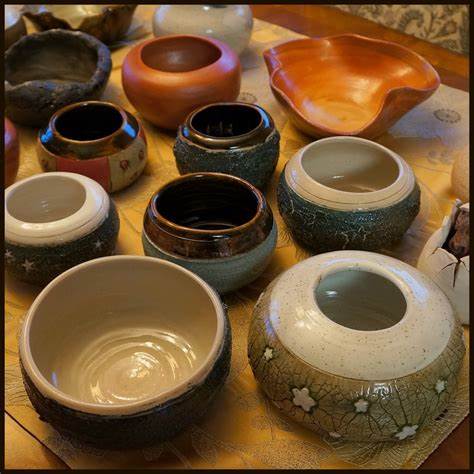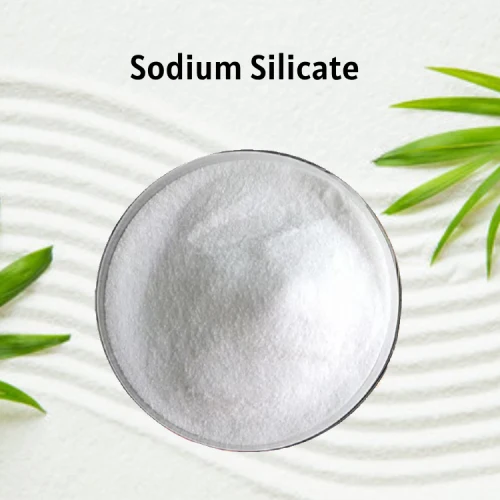Water glass, a term used for sodium silicate, is a chemical with many industrial uses.
Table of Contents
How to Use Sodium Silicate in Pottery?
- Sodium silicates are mainly used as glaze additions and binders in pottery. If used as a glaze ingredient, sodium silicate can create interesting effects such as cracks on the surface of pottery.
- Sodium silicate can also be used in slip casting to increase the strength and longevity of the ceramic pieces.
- Making sodium silicate the binding agent
Sodium Silicate in Pottery: Advantages of Using it as a Binding Agent
This is chiefly used to bind together porcelain and ceramic. Such kind of glazing can create interesting surface cracks on pottery.

Sodium Silicate is a potent tool in the hands of potters, who, while creating fine and complicated designs, may find the substance very significantly helpful for restricting any chances of crack development or shrinkage during the processes of drying.
Owing to its nature of beneficial properties, it has been used over millennia in various spheres such as construction and pottery.
Mixing Sodium Silicate With Clay
To use sodium silicate as a binding agent, you must first mix it with your clay before you shape your object. The type of clay you are using, as well as the strength and texture you want in your finished product, will determine how much sodium silicate you need.
Typically, about ten parts of water should be combined with one part of silicate before the silicate is mixed with the clay mixture. Depending on considerations such as the desired density of the finished product or the humidity level, this ratio may be adjusted.
Take the correct approach and do not add too much sodium silicate at once to the clay. While kneading, make small additions of sodium silicate onto the clay mixture until it gets to an appropriate consistency.
Helpful Hints for Good Sodium Silicate Use
When using sodium silicate as a binding agent in ceramics:
Test small amounts to get a good result and effect working with it.
Be careful not to add sodium silicate in excess, for it shrinks the surface while drying and may crack. Only numerous high-grade sources from reliable companies will be able to deliver consistent results.
Use an airtight container to store your sodium silicate mixture, helping it to avoid drying and contamination. Use the unique qualities of sodium silicate to create a ceramic object that is stronger with this guidance.
Sodium Silicate as a Glaze Additive
- Sodium Silicate to Produce Interesting Effects
Glazes can be augmented with sodium silicate to create distinctive effects like crazing or crackling. When applied to a drying glaze, sodium silicate shrinks and breaks the surface of the glaze and, thus, creates a cracked, grainy appearance.
This technique, usually called “crackle glazing,” often combines with other glazing methods to yield spectacular effects.
You can also do this by applying sodium silicate directly to glazed surfaces while they are still wet, resulting in an interesting pattern of crazy lines that really add depth and character to your pottery.
- Forms of Glazes Made with Sodium Silicate
Sodium silicate has applications for a variety of glazes, including both low-fire and high-fire varieties. Porcelain or earthenware clays can also be used, but it works best with stoneware clay bodies.

Ultimately, by mixing oxides like iron oxide or cobalt oxide with sodium silicate, some wonderful glaze colors can be achieved. For an extra bit of charm, you might try mixing a few oxides.
- Experimenting with Ratios and Combinations
It’s better to avoid pour, pour experiments. In experiments where sodium silicate will be added to your glazes, it is very important to work with a variety of ratios and combinations.
While the addition of a very small amount may not affect glazes at all, much sodium silicate will cause the burning piece to flake off.
To begin, try using sodium silicate in your recipe at 1-2% by weight with respect to the total weight of dry materials, but from there go ahead and experiment!
Mixing it with other things will cause the way that your sodium silicate reacts with the glaze and the results you expect to vary.
Add fritted glass or magnesium oxide to enhance melting characteristics and to give a matte finish. There are countless options!
- Using Sodium Silicate in Slip Casting.
- Using Sodium Silicate to Increase Durability.
- Sodium silicate can strengthen the slip-a liquid mixed with clay, water, and other ingredients-to be used in the casting of ceramic objects. The strength of slip is enhanced with sodium silicate, which is really why. Sodium silicate works as glue, cementing the binding between the clay particles.
Also Read: Sodium Silicate Industrial Uses and Applications
The Method of Pouring Sodium Silicate into Molds and Adding It to Slip
Sodium silicate has to be incorporated with the other materials of the slip prior to its use in slip casting. The amount of sodium silicate that is generally recommended depends on the type of clay being used and what results you want to achieve. In general, a small amount (1-2%) is generally added to the mix.
After blending with sodium silicate, the slip should be poured into molds but before pouring any material, the mold surface should be lubricated with a release agent to prevent any sticking.
The slip should be poured into the mold and left to hold until a solid outer crust forms about the edges.
After several hours or overnight, excess liquid can be tipped out, leaving behind enough still in the mold to support any layers that have not completely set.


Tips for Consistent Results
It is important to take care of the following when using sodium silicate for slip casting if it is to yield success every time:
- Sodium silicate must be properly mixed in before pouring the slip mix.
- Use good quality molds that have been properly treated using releasing agents.
- Exercise patience during drying; a no-quick way of doing things, as this can lead up to cracking and deformities.
- Try different combinations of clay, sodium silicate, and water ratios until you find what works best for your project. If all these conditions are met and different methods tried, slip casting of sodium silicate can produce tough and durable ceramic objects.
Safety Considerations
Sodium silicate is a chemical compound whose handling is risky. Therefore, it is very important to be careful in handling this to avoid any human health risks. Rules should be followed while handling sodium silicate for ceramic purposes:
Wear Protective Equipment
Sodium silicate are very caustic, and unfavorable contact with skin and eye can be irritating. As a result, it is advised that safety equipment should be used while working with this compound: Masks, gloves, goggles.
Avoiding Inhalation or Ingestion
Excessive overheating of sodium silicate during production or application may give rise to the development of toxic vapors.
As far as these fumes are concerned, inhaling them can give rise to respiratory problems in the long run; hence, it is highly important to keep areas well-ventilated and to avoid breathing them in.
In addition, sodium silicate should never be taken orally since ingestion could lead to more uncomfortable side effects, such as nausea, vomiting, or diarrhea.
Proper Disposal and Storage
Store sodium silicate in a cool and dry place away from heat sources or direct sunlight. The container must be completely sealed after use to prevent moisture from compromising the quality of the compound through time.
Any residual or unused sodium silicate must be disposed of according to local hazardous waste management program regulations.
Summary
- Versatility of sodium silicate in pottery
Sodium silicate has a range of advantages and applications in ceramics. It acts as a binder strengthening the connection between clay particles and thus making the end product stronger.
Added in glaze, it can create distinctive and fascinating effects for your ultimate piece. Its major property also includes extending the lifespan of your cast parts as it works as a slip casting agent.
- Experiment-Awaken Up to the Satisfaction
Once you have solidified the applications for sodium silicate, you could start experimenting with various recipes and methods applicable in your ceramic work. You could even try adding small amounts of sodium silicate to see how it affects the properties of your glazes or slips.
Blending sodium silicate with clay can lead to different strength and hardness profiles. Go ahead and get creative because experimentation leads to many of the most interesting results.
- Sodium Silicate’s Prospects in Pottery
More inventive uses of sodium silicate for pottery can be expected in the future, as other artists will come to know of all the advantages and versatility of using such material in their ceramic pieces. The options are practically limitless with this powerful addition, from complex sculptures to functional tableware.
For more interesting and robust results, consider adding sodium silicate to your next pottery project. Have fun while experimenting!
FAQS
How does sodium silicate help with pottery?
As a binding substance, it strengthens clay, is an ingredient in glazes for effects, and is an enhancer in slip casting for durability.
How is sodium silicate used as a binder?
Mix it with clay in a 1:10 ratio with water to inhibit cracking and to ensure stability during drying and firing.
How does sodium silicate work inside the glaze?
It produces crackling or crazing patterns, adding texture and depth to the surfaces of ceramics.
Can sodium silicate improve slip casting?
Yes, sodium silicate increases bonds between clay particles, reinforcing and increasing the durability of cast pieces.
What safety issues are presented in the application of sodium silicate?
Absolutely- wearing proper protective gear, working in a well-ventilated area, and storing sodium silicate under lock and key.

